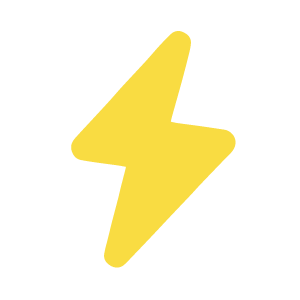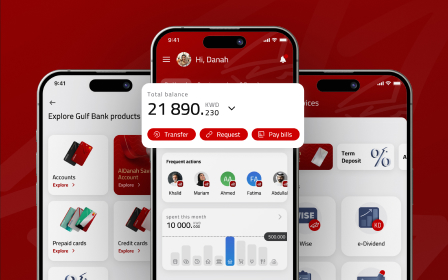AI UX Design: A New Future for the UX Industry
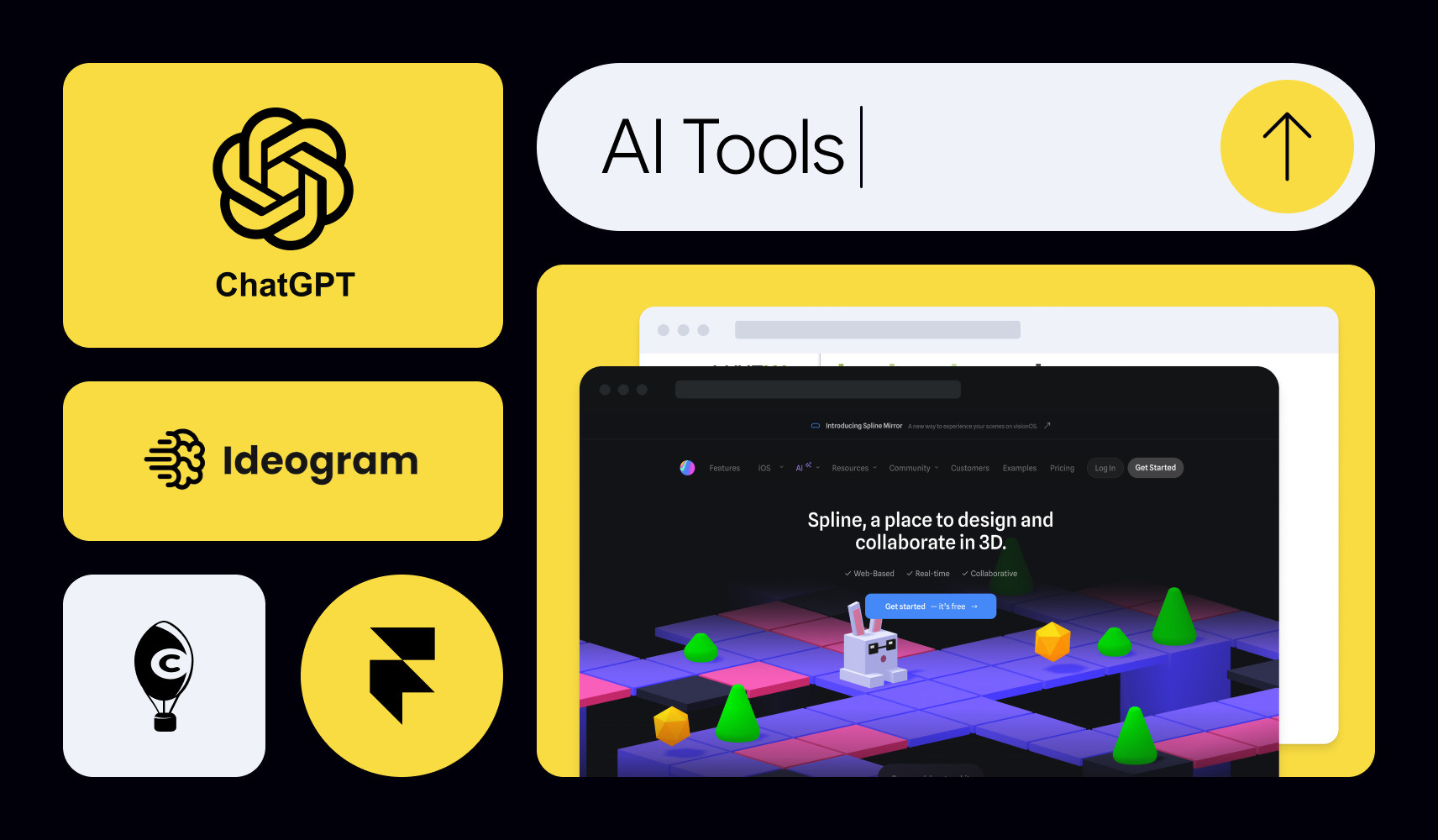
The Integration of AI and UX Design
Artificial intelligence has made a paradigm shift in the evolving world of User Experience (UX) design. And its impact is likely to become yet more significant. While there is talk of AI replacing human designers, the reality is that it’s still just a tool that empowers design teams, allowing them to take on the work that truly matters — that of creative problem solving, big picture strategizing, and personal connections.
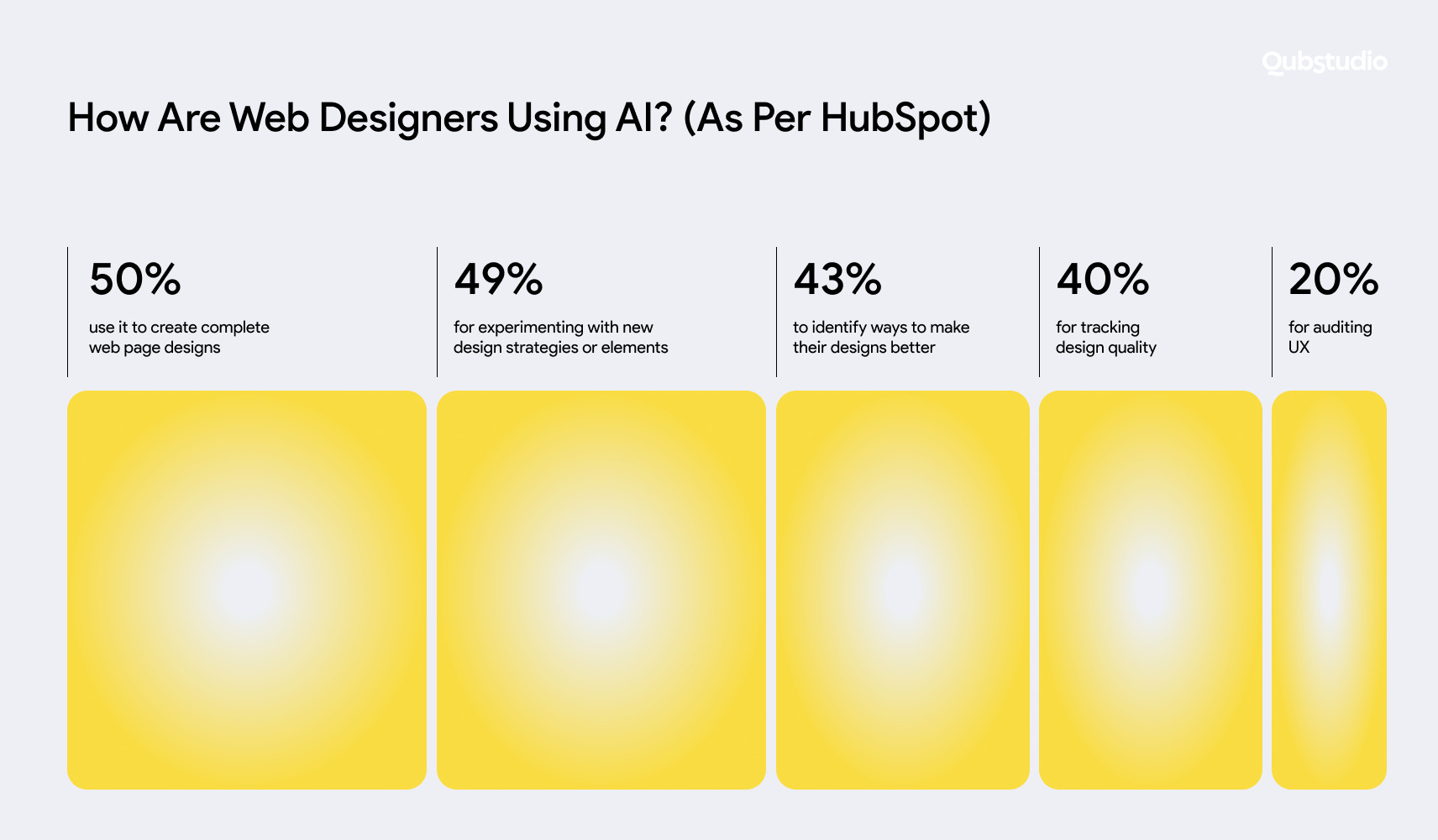
How Does Artificial Intelligence Impact UX Design? The Benefits of Using AI in UX Design
AI has been improving both workflows and the design process for designers. Here are some of the ways it’s doing that.
Benefit of AI in UX Design 1: Aids Customer Research
To truly resonate with customers, designers need to be good listeners. That is, they must take the time to get to know their target audience on a deep level. And that’s where the AI-UX design combo kicks in. AI can help by collecting and analyzing data from several sources, including website analytics, social media conversations, and customer feedback.
AI’s ability to process large amounts of data, recognize patterns, and gain insights makes the job of understanding customers easier for designers.
Benefit of AI in UX Design 2: Props Up Personalization
While 92% of businesses are now relying on AI-driven personalization to grow their business, designers should follow their example to personalize UX to increase customer satisfaction and drive business growth. And they can use AI to profile users, make sense of the data, come up with recommendations, and deliver dynamic interfaces.
In the world of B2B e-commerce, designers leverage AI to personalize search results, payment methods, shipping options, product recommendations, and website analytics.
Benefit of AI in UX Design 3: Optimizes Workflows
Designers can use AI UX design solutions to do time-consuming tasks, such as categorizing user actions, creating color schemes, and resizing images. They can even rely on the powerful AI UX design technology to carry out complex tasks, such as generating landing page layouts, creating prototypes, and performing A/B tests.
With AI, designers have more bandwidth for the strategic and creative parts of the project. This also paves the way for a streamlined workflow and faster delivery of project outputs.
However, as with any revolutionary technology, AI UX design solutions are not without their challenges.
The Challenges of Integrating AI and UX of Digital Products
Being the powerful technology that it is, AI has been sparking concerns about its impact on humanity. Here are the top concerns designers need to be aware of.
Challenge of Integrating AI and UX 1: Lack of Empathy
Unlike humans, AI is incapable of feeling emotions and empathizing with users. No amount of data processing can make up for this.
This is why human input may always be required, no matter how advanced the technology gets. For instance, an AI UX design tool can create a prototype, but designers will have to assess the output to ensure it makes sense to users.
Challenge of Integrating AI and UX 2: Trust Issues
People tend to distrust things they don’t understand. Given the complexity AI, UX design experts can fail to fully comprehend the technology. The lack of knowledge around AI’s inner workings will always make people question its results. An AI tool, for instance, may scrape the internet for information and answer user inquiries without divulging its sources. The lack of transparency can easily sow distrust.
Challenge of Integrating AI and UX 3: Inaccurate Results
When poorly configured, AI algorithms may deliver faulty results that could lead to even more work for UX designers. For instance, design teams could spend a lot of time building a user interface only to later realize that the user research delivered inaccurate data and insights. This mistake could result in the team having to redo everything. Worse, the project could be tagged as a failure and get canceled altogether.
Challenge of Integrating AI and UX 4: Unfair Biases
AI could be working on training models that have innate biases, which could potentially result in designers unknowingly releasing a product that provides discriminatory user experiences. For instance, chatbots feed off the information presented to them, increasing their learning over time. Before you know it, this continuous learning could end up absorbing and amplifying discriminatory views and prejudices in society.
Challenge of Integrating AI and UX 5: The Risk of a Job Armageddon
There will always be concerns about AI replacing people’s jobs, and designers are not immune to this risk. But as demonstrated above, even AI-powered creations still require human input to truly resonate with the end users. This is to ensure the results are accurate and empathetic. AI is merely a tool that supports designers and makes them more efficient at their jobs.
Instead of fearing AI, UX design experts should learn to use the technology to their advantage.
Best Practices for AI in UX Design
Those who master powerful tools gain strength. The same is true of designers who learn to make the most out of AI in UX design.
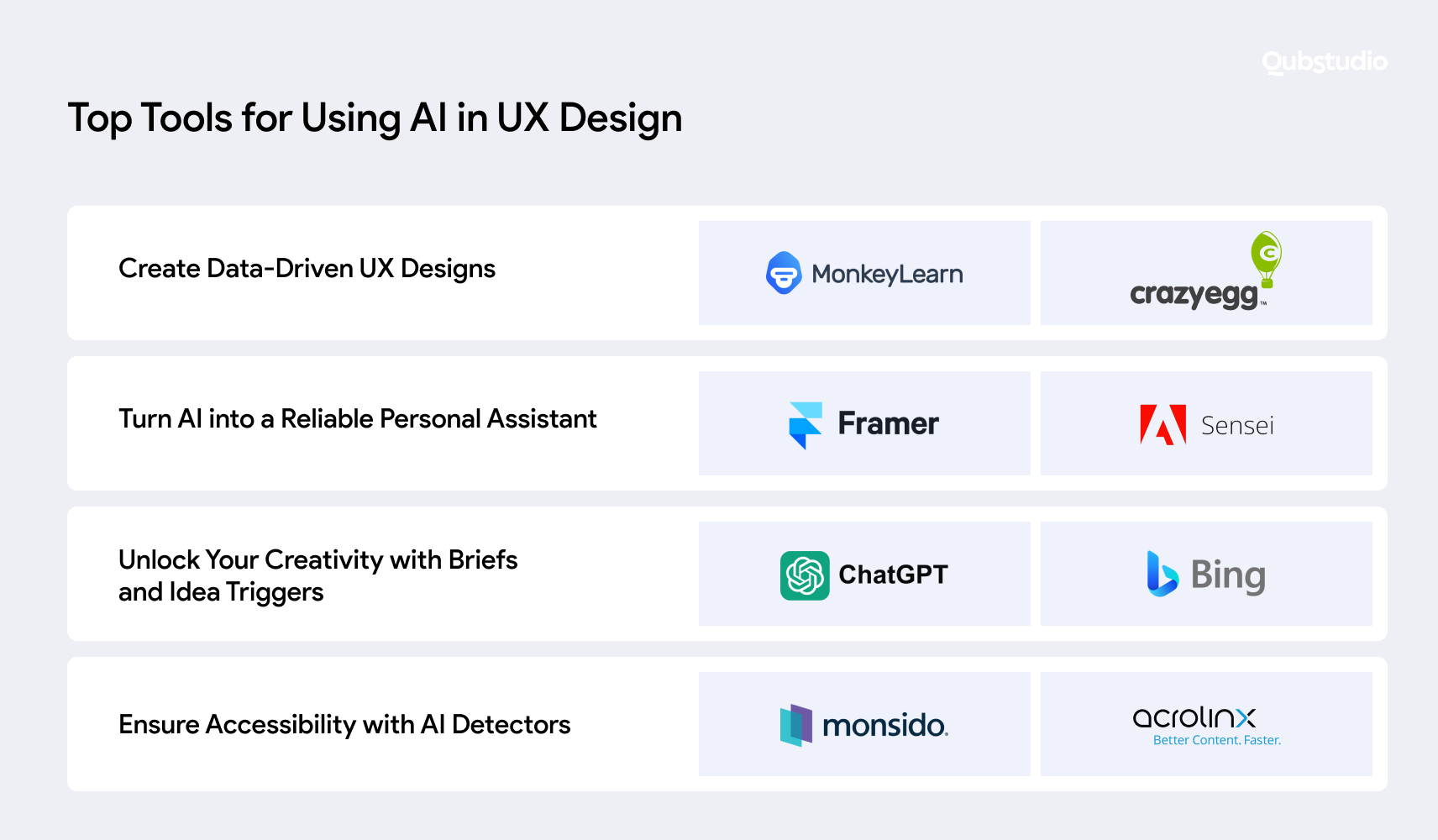
Best Practice for AI in UX Design 1: Create Data-Driven UX Designs
To create successful products, you need to know just how to tickle the fancy of the users. This requires stringent user research. And you can rely on AI for UX design to make the research process less strenuous, particularly by helping you gather and make sense of customer data.
Here are some specific ways it can help you:
- AI-powered analytics to process behavioral data. Analytics tools can help you observe and analyze just how customers are interacting with your digital products. Crazy Egg, for one, can track how your customers navigate your site, figure out where they get stuck, and make smart design edits to boost your conversion rates.
- Natural Language Processing (NLP) to analyze customer sentiment. AI can help you learn just how customers feel about your brand by analyzing their online conversations and feedback. MonkeyLearn is an example of a platform that determines customer sentiment by analyzing raw data from chats, reviews, and social media posts.
- Generative AI to define success metrics. To measure the success of your UX designs, you need to track the right metrics. And you can ask ChatGPT to provide you with recommendations. Simply enter a prompt that tells the generative AI tool exactly what you require.
Data can only take you so far. It is AI that will give you the insights that will truly make that data useful.
Best Practice for AI in UX Design 2: Turn AI into a Reliable Personal Assistant
There’s no better way to boost your efficiency as a UX designer than by working with a personal assistant, especially one that never gets tired or takes breaks. And AI is living up to that role.
Here are some of the ways AI streamlines your workflow:
- Automates routine tasks and processes. AI can free up your time by taking over repetitive work. For instance, the site builder Framer can churn out code and layouts, making it easy and quick for designers to create prototypes.
- Enhances UI design. Designers can turn to AI to bring aesthetic appeal to the practical features of their UX design. Adobe Sensei, for one, uses predictive analytics to dig into its library and pull out logos, typefaces, and icons that match your brand identity.
- Generates human-sounding content. Writing content for presentations or simply responding to emails can take up a lot of time. Fortunately, AI tools like ChatGPT are now smart enough to create conversational content.
With AI at your disposal, there really is no point in shouldering the whole workload unassisted.
Best Practice for AI in UX Design 3: Unlock Your Creativity with Briefs and Idea Triggers
Even designers can get stumped by creative blocks. Once again, you can turn to ChatGPT for a solution. The tool can help you unlock your inner creativity by getting the ball rolling. It does so by creating project briefs, coming up with fun activities for your ideation workshop, and providing word associations.
Best Practice for AI in UX Design 4: Ensure Accessibility with AI Detectors
Infusing your design with accessibility elements will make it inclusive and compliant with accessibility laws and industry standards. Here are some ways AI can help ensure your UX is accessible.
- Detects accessibility issues. Auditing your website helps you identify any room for improvement. You can use AI tools like Monsido, an accessibility widget, to check whether your website is fully compliant with the Web Content Accessibility Guidelines (WCAG).
- Flags biased or discriminatory language. You need to remove any exclusionary language from your website. Acrolinx, a content governance solution, spots problematic language issues as you type your content.
We’ve already touched on the AI tools that prove useful for UX designers. In the next section, we’ll list even more tools that should be in your design arsenal.
Top Tools for Using AI in UX Design
To speed up your work and elevate your output, you need to leverage the best AI tools. And you can’t miss out on the following top AI-powered digital solutions.
Bing Image Creator
Developed by Microsoft Bing, this AI UX design tool whips up digital art based only on your text prompts. Simply describe the image you’d like to see, and this powerful tool will create an image that captures even intricate details like facial expressions and surface textures. It can also conform to your preferred aesthetics, from abstract to realist. It’s a great way to quickly transform your ideas into visual outputs.
Image Creator is built into Bing Chat, an AI-powered assistant that lets you browse the web, get answers to your complex questions, and summarize articles.

Spline
Spline is an AI UX design solution that makes it easy even for newbies to create designs in 3D. It won’t overwhelm you with too many techie settings and features. And you get to use it for free on any browser.
Spline’s intuitive interface introduces you to Object Manager, a stunning library of projects to inspire you, and a set of tools to help you tweak the objects’ background, effects, lighting, and colors. If you’ve used Sketch before, you’ll notice that Spline’s interface is quite similar.
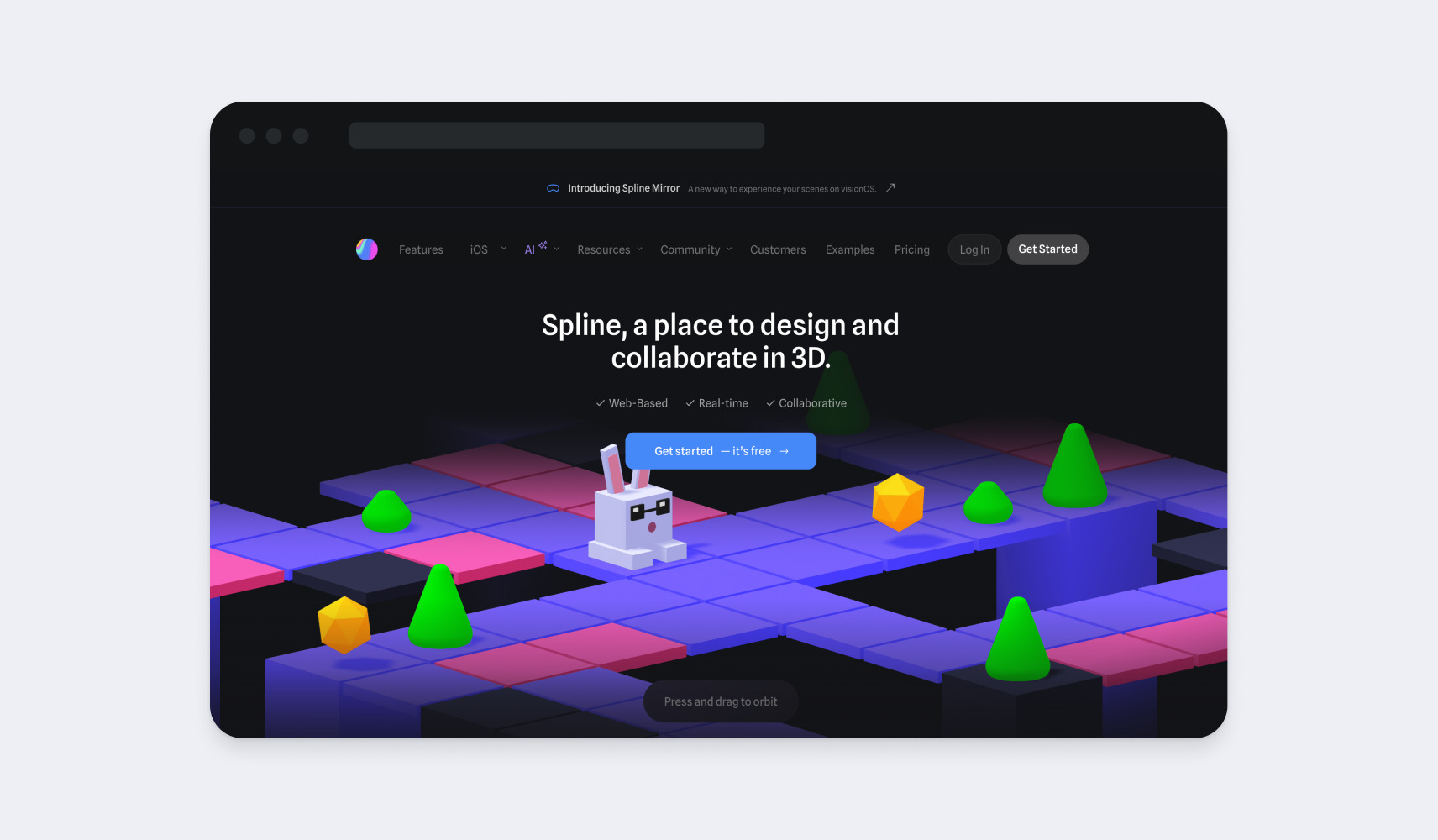
Leonardo AI
Leonardo AI is an AI product design tool for image-generation tool that lets you create production-quality visuals. You can take complete control of the creative process with tools that allow you to use specific prompts and schedulers.
Advanced AI models power fine-tuning tools that enable users to tweak images until they’re production ready. This high-performance AI UX design solution speeds up the rate you complete your creative journey, from ideation to creation and refinement.
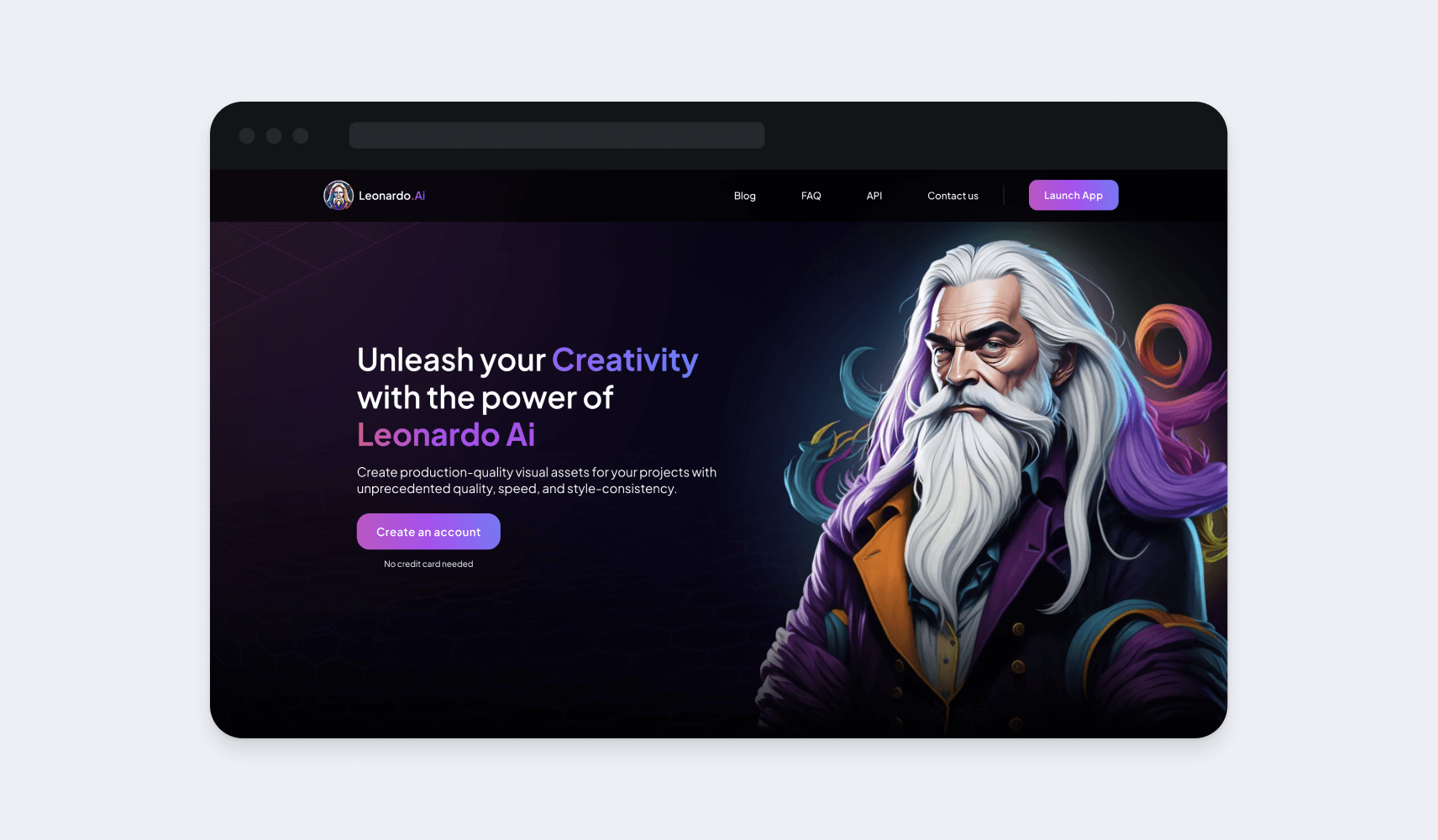
LukeW
No matter how experienced we are, there are times when we hit a snag at work. Wouldn’t it be great if we could ask a seasoned expert when that happens?
LukeW is not an AI UX design tool in a classic sense. It’s a chatbot that simulates conversations with Luke Wroblewski, a leading international figure in the world of software development and design. Talking to him allows you to tap into his experience working as a product director at Google. He has also created software used by billions of people across the globe.
The chatbot does not offer live conversations, but it does a great job of poring over Wroblewski’s published work and presentations and presenting you with the specific information you need.
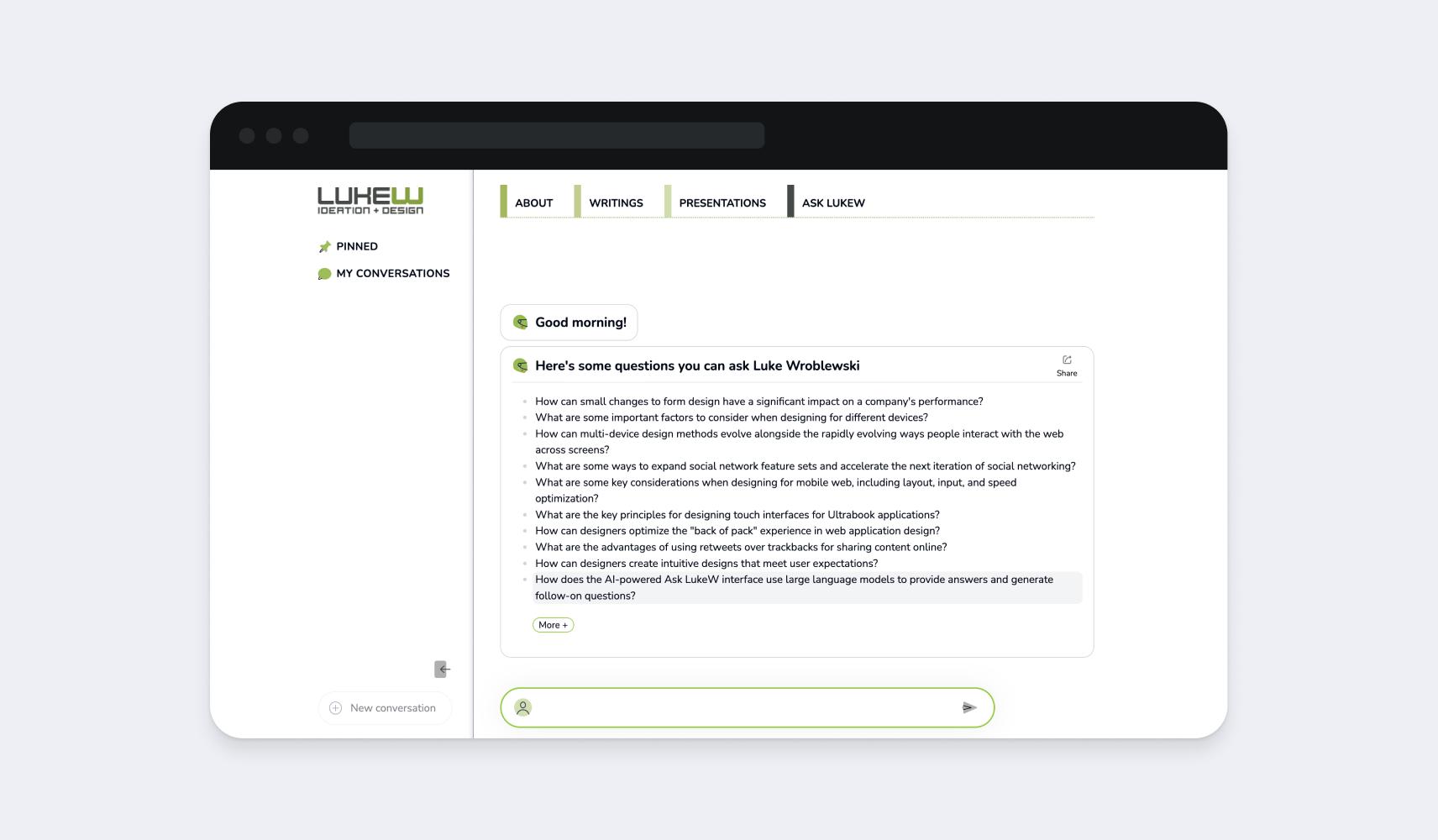
Ideogram
Ideogram is a powerful AI UX design tool that allows you to quickly and easily create photorealistic images with embedded typography. It makes adding text elements to images much more convenient. And it’s being hailed for its stunning typography presets with a rich variety of fonts, colors, and sizes.
Ideogram was created by William Chan, Chitwan Saharia, and Jonathan Ho, who are all former Google Brain researchers. You can expect a product worthy of this pedigree.
AI is already revolutionary. But it is only getting started.
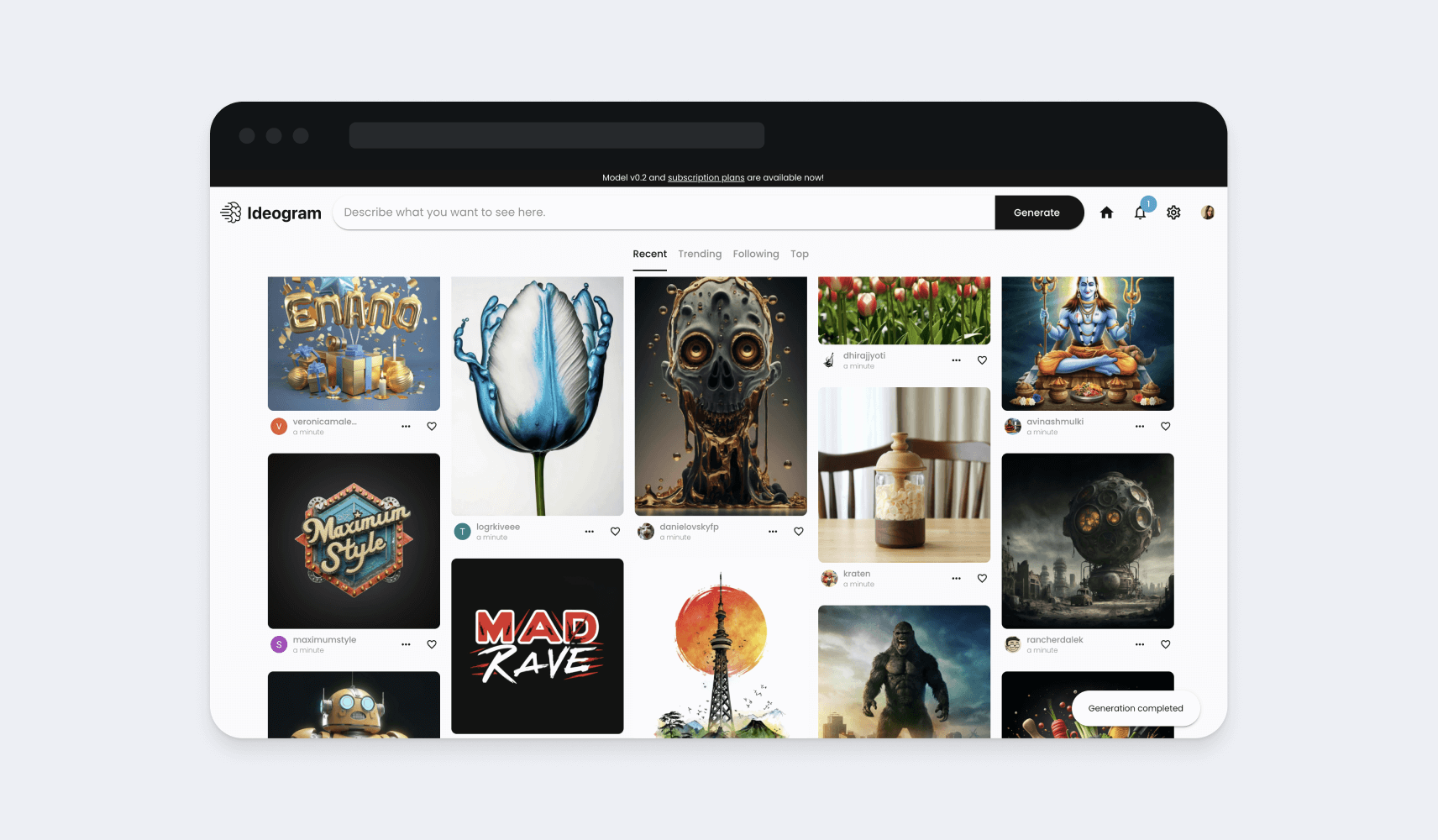
The Future of AI in Web and Product Design
There are still many key areas to improve when it comes to AI and UX. We’re expecting to see inroads into the following in the future.
- AI UX design tools that use virtual reality (VR) and augmented reality (AR). Computer vision and object-recognition algorithms play a key role in the creation of VR and AR web experiences, paving the way for immersive user interfaces that meld together digital and real-life environments.
- AI UX design tools for collaboration. Features such as version control and real-time editing have been supporting collaborative work among designers. AI can take this to the next level with recommendations for improvement that are derived from the team’s collective feedback and industry best practices.
- AI UX design tools with voice user interfaces (VUIs). AI can help designers make sense of user intent, contextual information, and conversational flows, allowing them to design effective and resonant user workflows.
- AI UX design tools for motion design. Designers can leverage AI to create dynamic web pages, engaging animations, and personalized user experiences. AI-powered tools like are already making it easy for designers to animate characters. Simply upload a video and the AI tool will capture the motion of humans or any bipedal character and transfer it to the digital character.
Conclusion
We’ve said it before and we’ll say it again, AI and product design is a revolutionary combo. And those who know how to leverage it will get ahead.
From making sense of data to generating prototypes, AI is already making the design process easier for UX designers. Despite discussing so many powerful tools at your disposal, this article has barely touched the surface of the capabilities of AI in user experience design.
There are more AI UX design wonders out there to explore. And the future is promising and exciting for design services.
Work with us at Qubstudio as we leverage AI for UX design to reach new heights of your product success.
FAQ
Is AI taking over UX design?
AI in UX design doesn’t take the human out of the equation. In other words, it is taking repetitive and time-consuming tasks off the backs of designers, but it still requires human input to ensure the product encompasses the empathy and human creativity to truly resonate with end users.
Is there an AI that creates UI designs?
AI for UI design, like Uizard, is now powerful enough to generate UI designs from text prompts and transform hand-drawn images into wireframes.
How do I combine AI and UX?
AI and UX complement each other by leaving AI to do simple and complex design tasks like carrying out UX research, creating mock-ups, and conducting A/B testing.
What are the ethical considerations when using AI in UI/UX design?
When using AI in UI/UX design, Designers must make sure the UI/UX design elements do not have biases that are exclusionary to certain groups of people. They must also ensure that the AI does not make the digital products too impersonal or detrimental to humanity. On that note, technology must not make humans dispensable, it must remain a tool that makes humans more productive.
